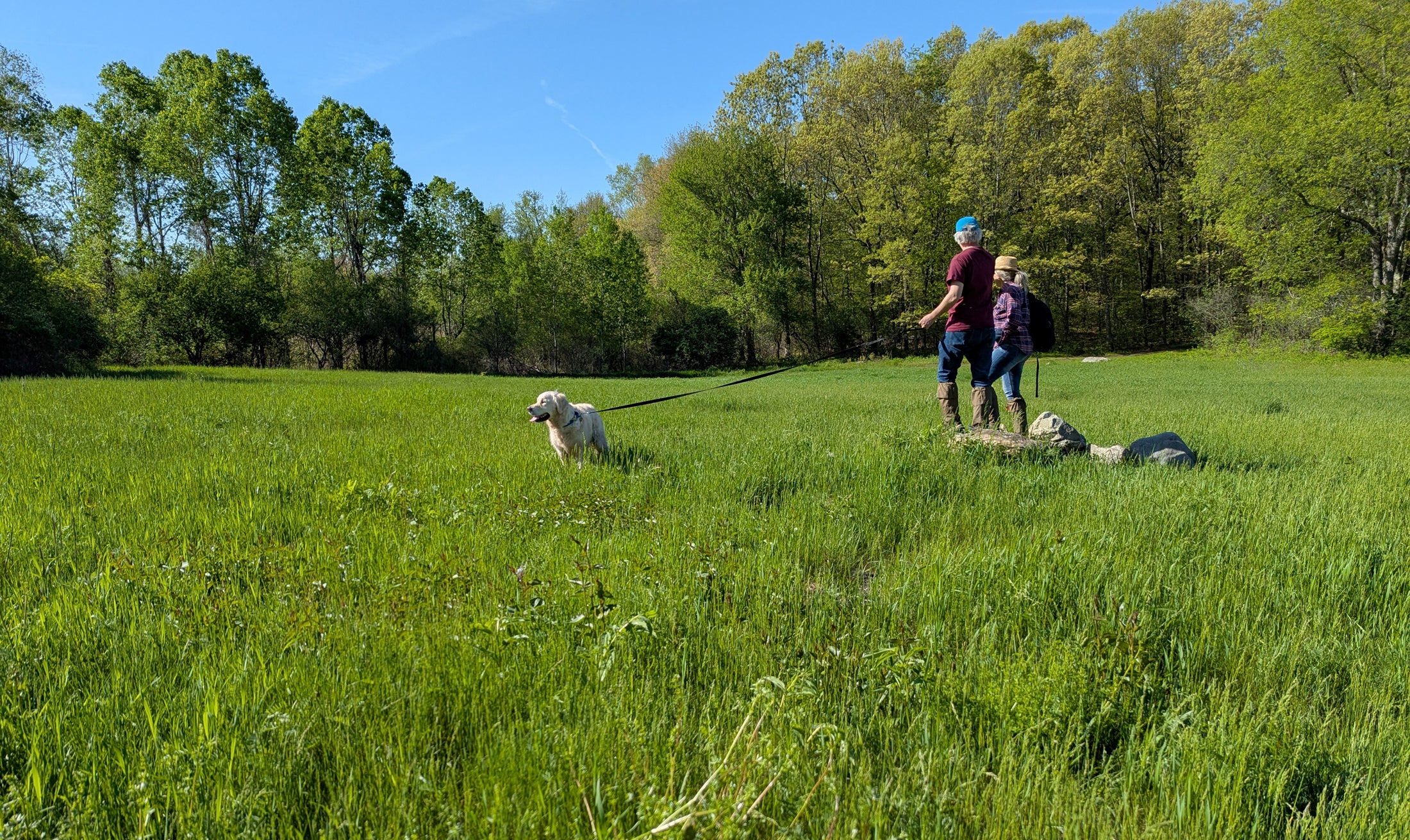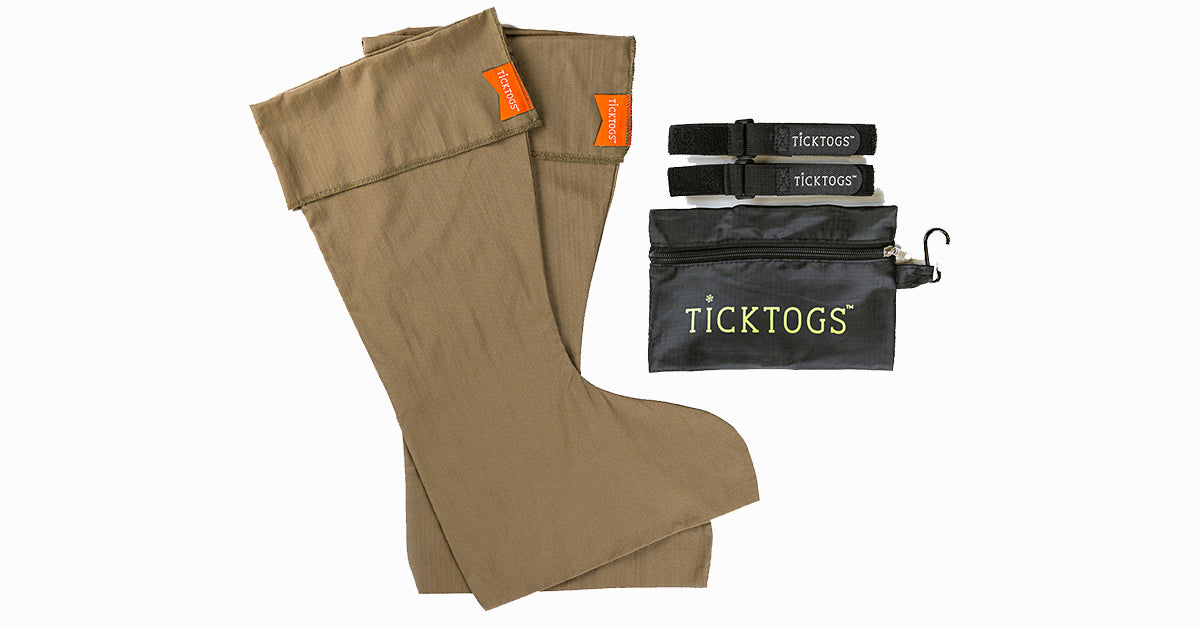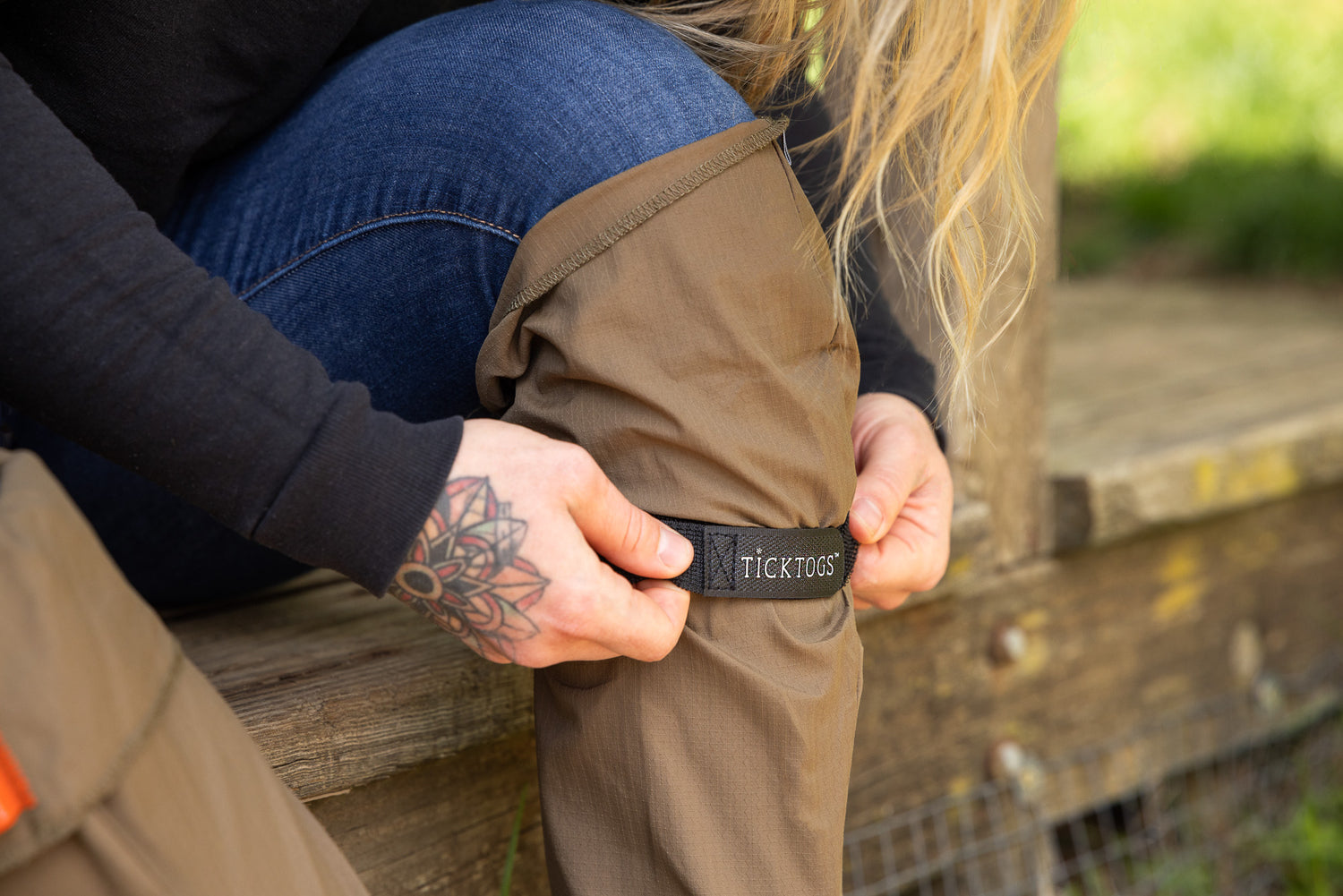Ultra-light Tick Protection Gaiters

Savor Nature Again

Ease & Comfort
Strong but soft, never sweaty, quick drying, odorless, adjustable, small to pack.
Gaiters, Straps, Zip Pouch $45

Three-Way Protection
Stop ticks: Ultra-tight weave and full foot coverage excludes ticks of all sizes
Repel ticks: Insect Shield® Permethrin repels ticks and lasts 70 launderings
Trap ticks: Folded-down top stops most climbing ticks
Ticks! The bite you don’t feel, from the bug you don’t see. Don’t get bit!
Using Ticktogs
• Remove shoe, pull a gaiter up to your knee over sock, pant leg or bare foot and calf
• Slide strap up to just below the knee, adjust for comfort
• Tug the gaiter up, pull out wrinkles in the foot area
• Fold the top of the gaiter down over the strap
• Put on your shoe; do NOT wear Ticktogs without footwear
Questions about our gaiters
We have lots of answers for you. Check our FAQs.

Ticktogs: ready when you are for work or pleasure
• Protection where ticks alight: foot & lower leg
• Insect Shield® odorless protection built in
• Soft, breathable, never sweaty, quick-dry
• Sheer, strong fabric, never tight in shoes
• Toe to knee tight-weave protection
• Packed in zip pouch, only 3 ounces
Tick Info
View all-
Seasonal Activity of Ticks
They're still biting! Fall is here and the Deer Ticks are still out and about. See the Tick Activity chart.
Seasonal Activity of Ticks
They're still biting! Fall is here and the Deer Ticks are still out and about. See the Tick Activity chart.
-
Learn about Ticks: Resources Online
Helpful online resources and links to understand tick hazards and how to protect yourself, family, and friends.
Learn about Ticks: Resources Online
Helpful online resources and links to understand tick hazards and how to protect yourself, family, and friends.
-
Of Mice and Lyme – Spread of Lyme
The blacklegged deer tick is not hatched with Lyme disease, it acquires Lyme disease after feeding on an infected host. Field mice are an important source of Lyme disease bacterium...
Of Mice and Lyme – Spread of Lyme
The blacklegged deer tick is not hatched with Lyme disease, it acquires Lyme disease after feeding on an infected host. Field mice are an important source of Lyme disease bacterium...

Ticks crawl, they do not jump or fly. Ticks feed at each stage of their life cycle (larva, nymph, adult). Ticks most often climb on from below, hitching a ride on foot or shin, crawling up to a bite site. In most cases people will not feel a tick bite. Tick borne diseases: Lyme, Anaplasmosis, Babesiosis, Ehrlichiosis, Tularemia, Rocky Mountain Spotted Fever, Powassan Virus, Alpha-gal Syndrome, Larval Tick Dermatitis. Get Ticktogs protection.
